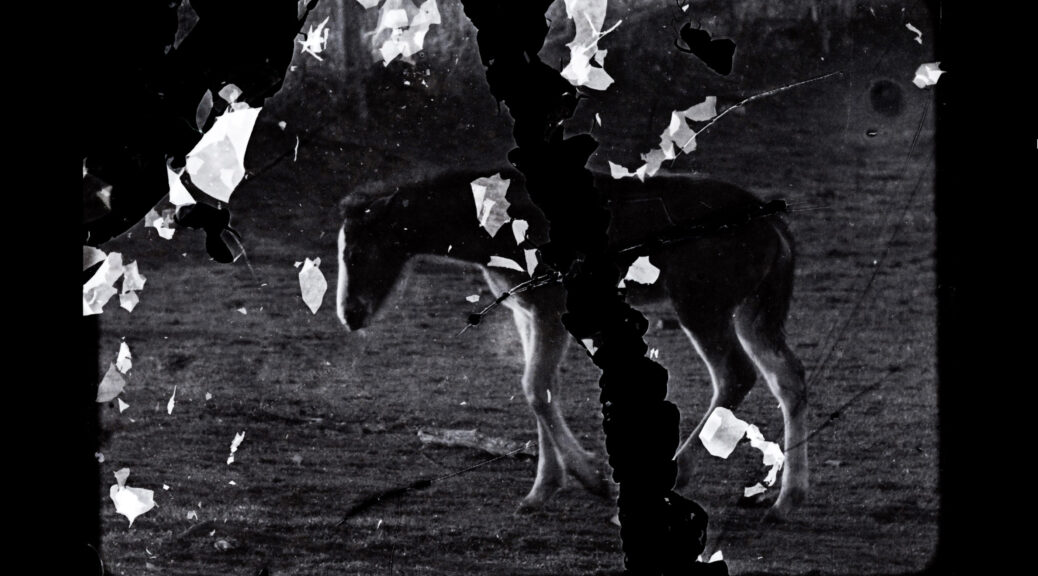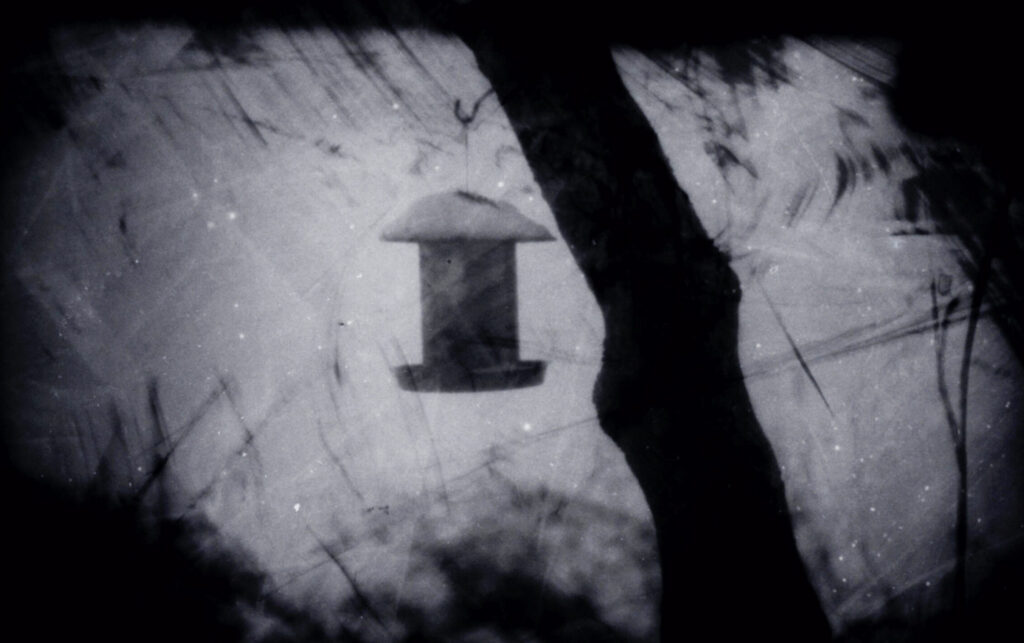

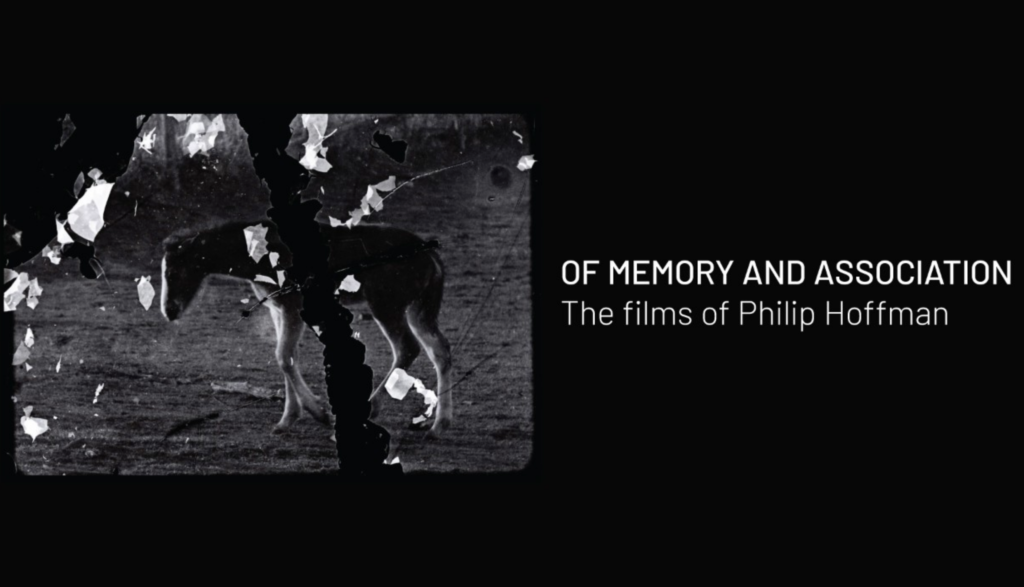
The Gāyatrī mantra of the Ṛigveda sets-up the entire short film: it is the mantra itself that creates the atmosphere of darkness, followed by the first creation: the tree, which contains the identity of darkness as if it were its visible matter…. (see below) “Deep 1” Ribalta Film Fest Review
`Deep 1′ preview
DEEP 1 (2023, 15 min, HDV or 35mm)
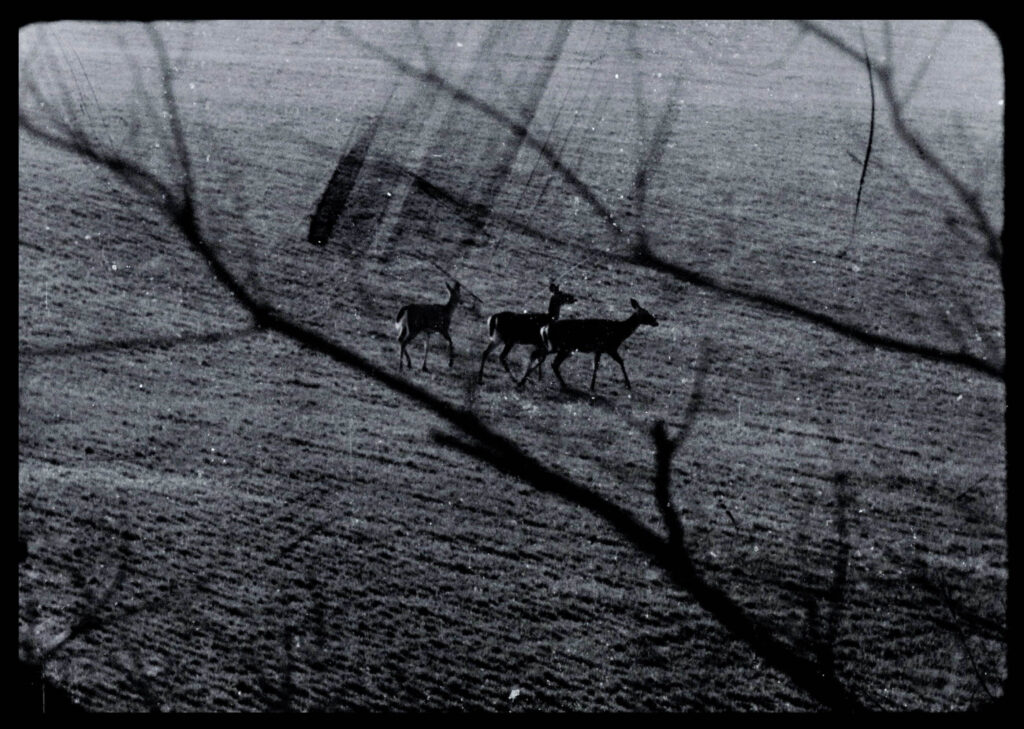
Hoffman on `Deep 1′
…more on Hoffman’s films
Stan Brakhage on `passing through/torn formations’
“passing through/torn formations accomplishes a multi-faceted experience for the viewer—it is a poetic document of Family, for instance—but Philip Hoffman’s editing throughout is true to thought process, tracks visual theme as the mind tracks shape, makes melody of noise and words as the mind recalls sound.”
PASSING THROUGH/TORN FORMATIONS (1988)
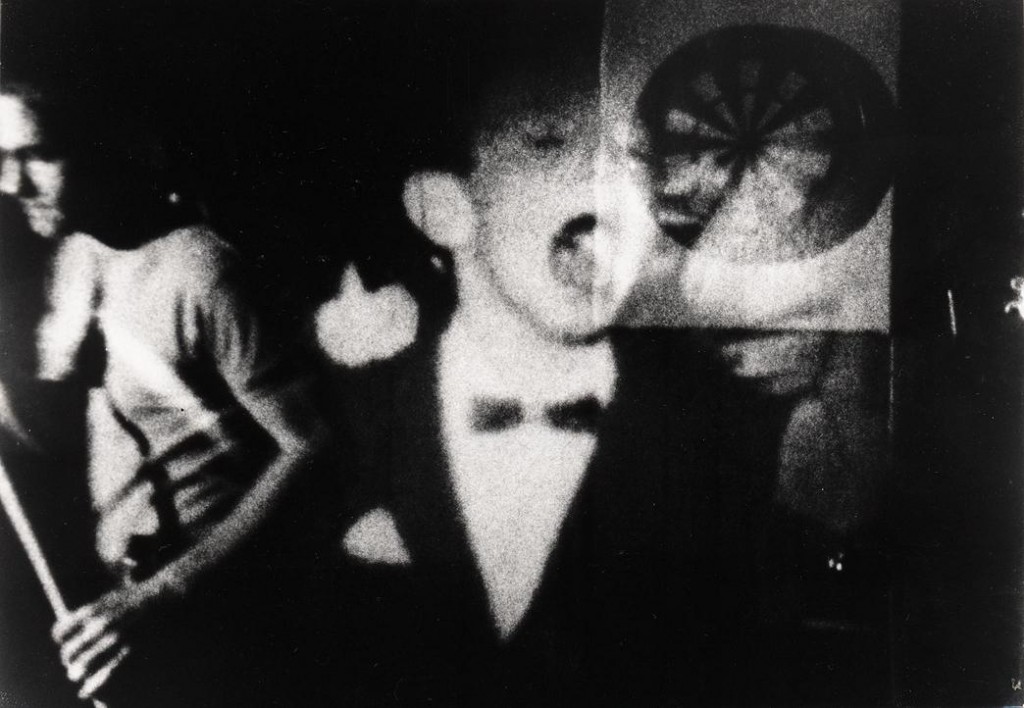
`passing through/torn formations’ preview
Mike Hoolboom on `passing through/torn formations’
Hoffman’s sixth film in ten years, passing through/torn formations is a generational saga laid over three picture rolls that rejoins in its symphonic montage the broken remnants of a family separated by war, disease, madness and migration. Begun in darkness with an extract from Christopher Dewdney’s Predators of the Adoration, the poet narrates the story of ‘you,’ a child who explores an abandoned limestone quarry….The film’s theme of reconciliation begins with death’s media/tion—and moves its broken signifiers together in the film’s central image, ‘the corner mirror,’ two mirrored rectangles stacked at right angles. This looking glass offers a ‘true reflection,’ not the reversed image of the usual mirror but the objectified stare of the Other. When Rimbaud announces ‘I am another’ he does so in a gesture that unites traveller and teller, confirming his status within the story while continuing to tell it. It is the absence of this distance, this doubling that leads the Czech side of the family to fatality.
complete Cinema Canada review by Mike Hoolboom on `passing through/torn formations’
more on `passing through/torn formations’
VULTURE (2019)
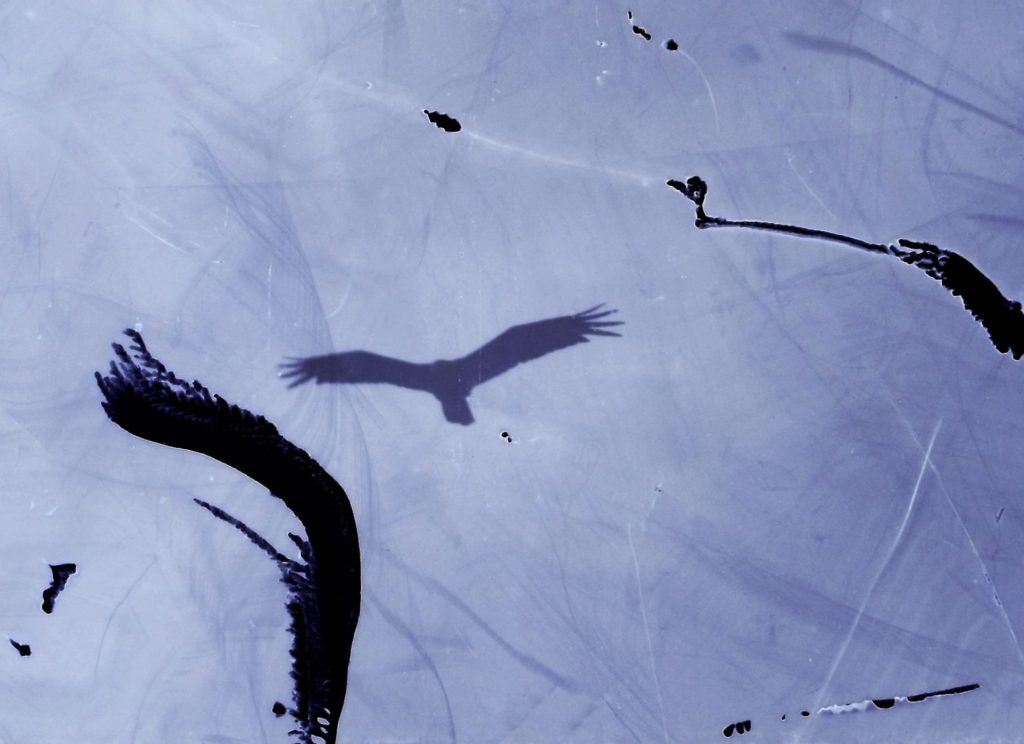
Kim Knowles on `vulture’
“ Hoffman’s vulture” a beautiful and contemplative study of interspecies co-existence, where farm animals roam freely and the camera patiently observes their various interactions. Shot on 16mm film and processed with plants and flowers, it’s also an exercise in eco-sensitivity on so many levels.” Edinburgh International Film Festival, Blackbox
Mike Cartmell on Hoffman’s Practice
“Hoffman’s practice is to work with leftovers, scraps and the mode of his work is fragmentary. His approach is from the margins, and features the marginal: this grandmother; that body on a Mexican road; this one, this very one I loved, lost. It can be excruciating at times. There are even occasional bits that stick in the craw, refuse to be processed… But in general, what it preserves, harbors, secretes, what opens in it, what swoons and rages and percolates and dodges in this broad corpus is surprising, rich and deep. The work exceeds itself, is more than what it’s made from, and becomes itself its own trace, its own remnant. Available for decipherment. ” (Stet, Cineaction, Issue 57, March 2002)
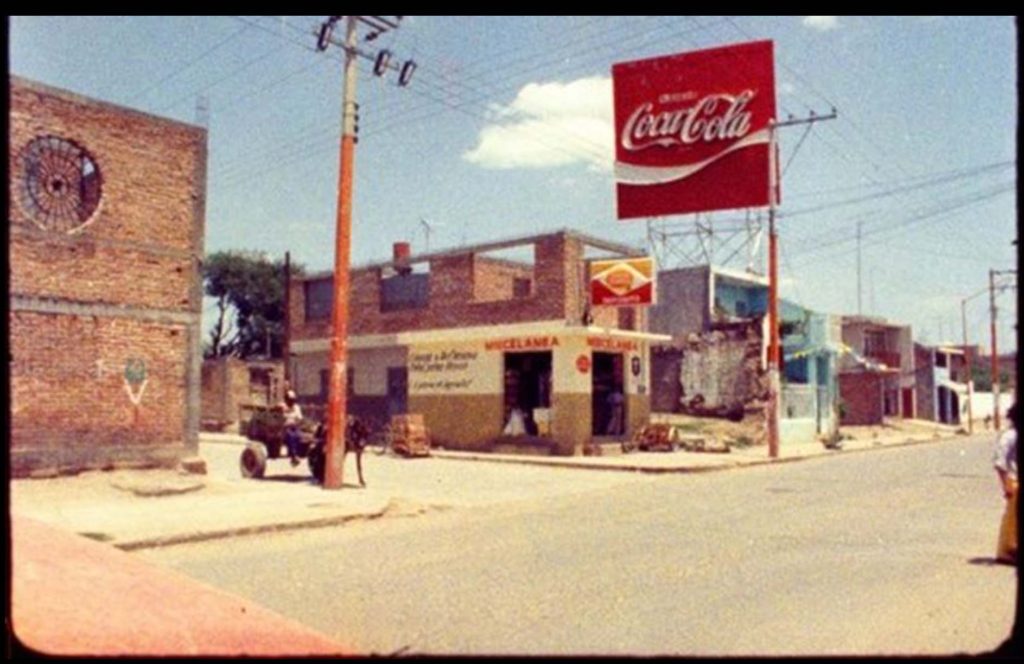
Janine Marchessault on `Somewhere Between…’
“Somewhere Between Jalostotitlan and Encarnacion by Philip Hoffman takes us back out to the street as Hoffman builds a film around not filming a young boy run over by a truck and lying dead on a street corner somewhere between Jalostotitlan and Encarnacion. The death at the centre of the film is conveyed through text in this record of travels between Mexico and Toronto. The film engages with the things, events, architectures and emotions that carve out a place and give it a redemptive quality. Structured around three event—a horn band in Guadalajara, a Catholic procession in Toronto, traffic in Colorado—the film is a haiku of sorts, focusing on the life after death.” (Fabulous Festival of Fringe Film, Durham, Janine Marchessault)
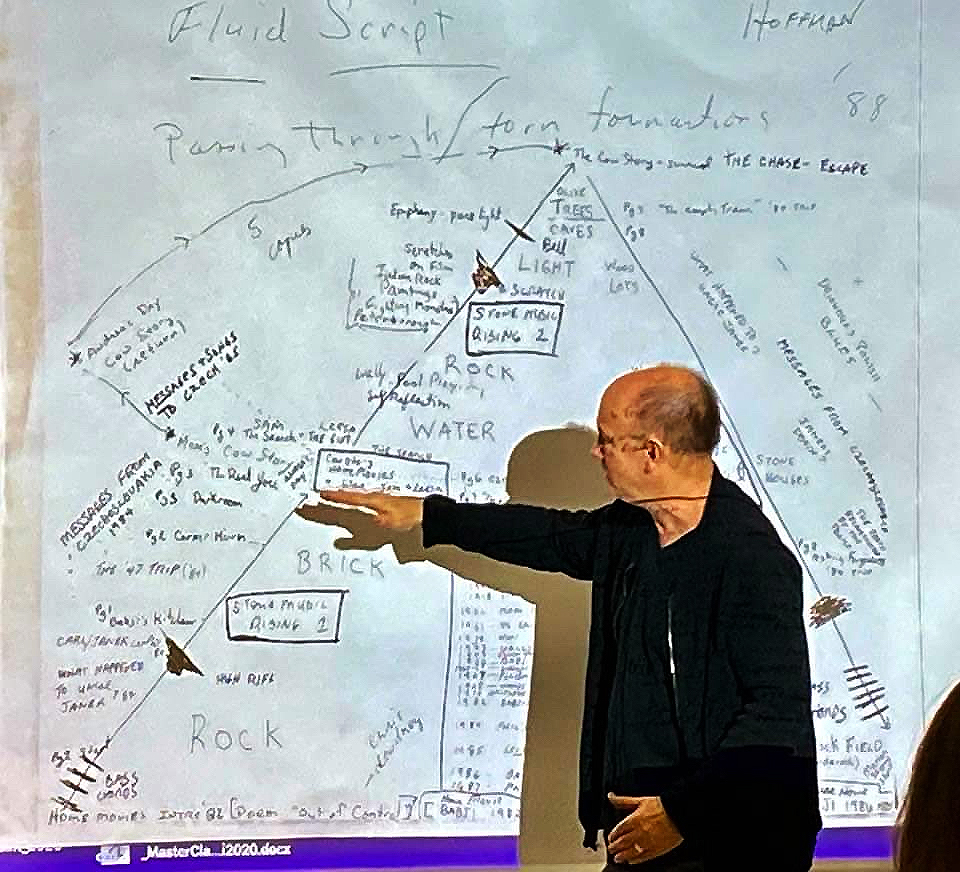
Waterloo-born filmmaker receives Governor General’s Award
Martha Rosler on Hoffman’s Films
“Philip Hoffman is a precious resource, one of the few contemporary filmmakers whose work provides a bridge to the classical themes of death, diaspora, memory, and, finally, transcendence. As Landscape With Shipwreck makes clear, Hoffman explores these most Canadian of themes without grandiosity; instead they emerge from stories held close to the ground, the family, and personal experience, whether at home or in very unfamiliar places indeed. And he does so through a constant renovation of method that enriches the viewers’ ability to grasp how film form contains and conditions meaning. This is just the sort of human voice articulated through film that we desperately need amidst the thunder of corporate media in all forms.” (“Landscape with Shipwreck: 1st Person Cinema and the Films of Philip Hoffman”, Insomniac Press/Images Festival 2001)
ALL FALL DOWN (2009)
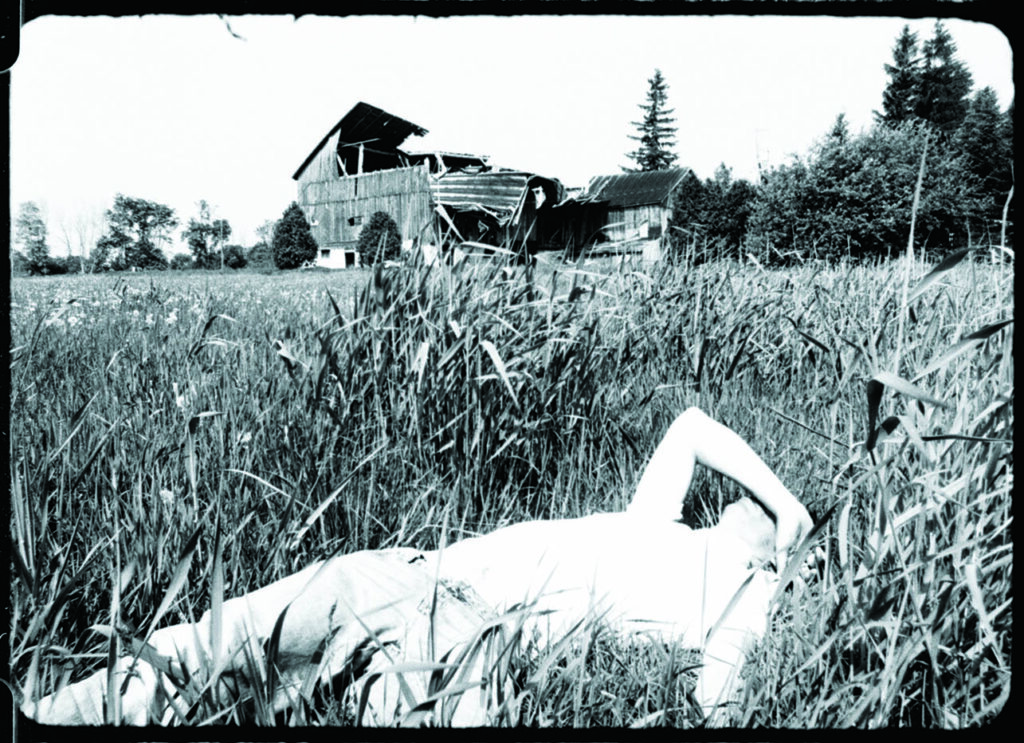
Adrian Kahgee & Debbie Ebanks Schlums on `All Fall Down’
Released a decade before the Truth and Reconciliation Commission, Hoffman subtly questions how guests on Indigenous land, himself included, have come here to live. The film’s political-historical observations should feel like an anarchronism today…The lack of political progress regarding the Calls to Action, the effects and affects of migration, the struggles with the legal system, the impact of all of this on mental health and on future generations, are some of the pressing contemporary issues resonating today in All Fall Down.
Scott MacKenzie on `All Fall Down’
Michael Sicinski on `All Fall Down’
Flowers #3 (Kissed by the Sun) (2023, 10 min, HDV )

more on Flowers #3 (Kissed by the Sun)
CHIMERA (1995)
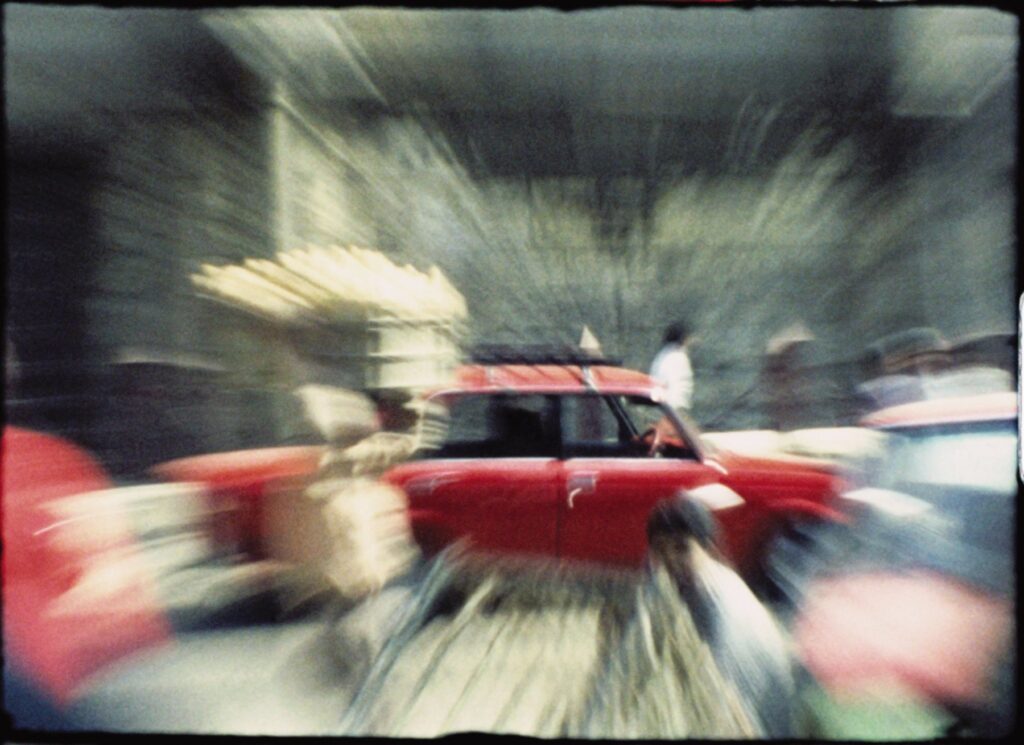
Dirk de Bruyn on `Chimera’
“The film consists of collected, diaristic images amassed through Hoffman’s travels. Uluru… Russian shoppers, a Cairo market, and day to day images from home and away… make floating appearances. These have been gathered on the run, and then reconstituted with an uncanny ephemeral floating rhythm, a dance of light, and replaying, with commendable control, the idea of visual music, visual jazz. Though the method of collection may have had an air of arbitrariness about it, the meticulous construction and focus on rhythm in the finished piece suggest an artist who has learnt to master technique so as to let it speak for him about ‘other’ things.”
KOKORO IS FOR HEART (1999)
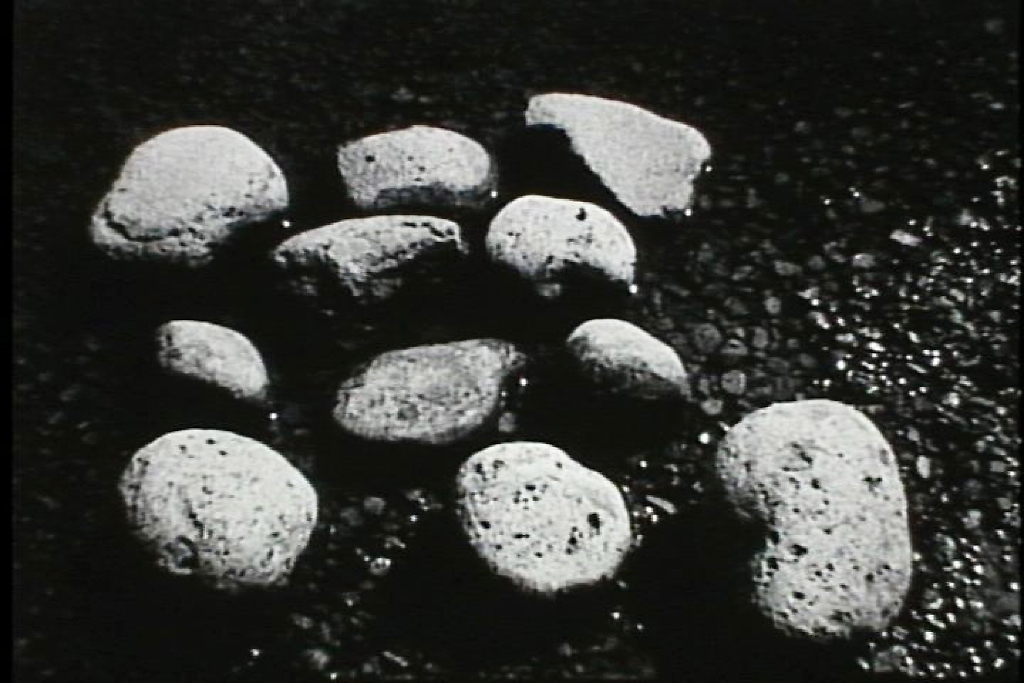
Liz Czach on `Kokoro is for Heart’
“Communication takes a poetic turn in Kokora is for Heart. Originating as a performance piece, the director, Phil Hoffman, screened segments of this film in a random order selected by the audience (Opening Series 3). Accompanying this was the sound poetry of Gerry Shikatani. From this process the film has found its organic and final structure.” (TIFF Program, 1999)
WHAT THESE ASHES WANTED (2001)
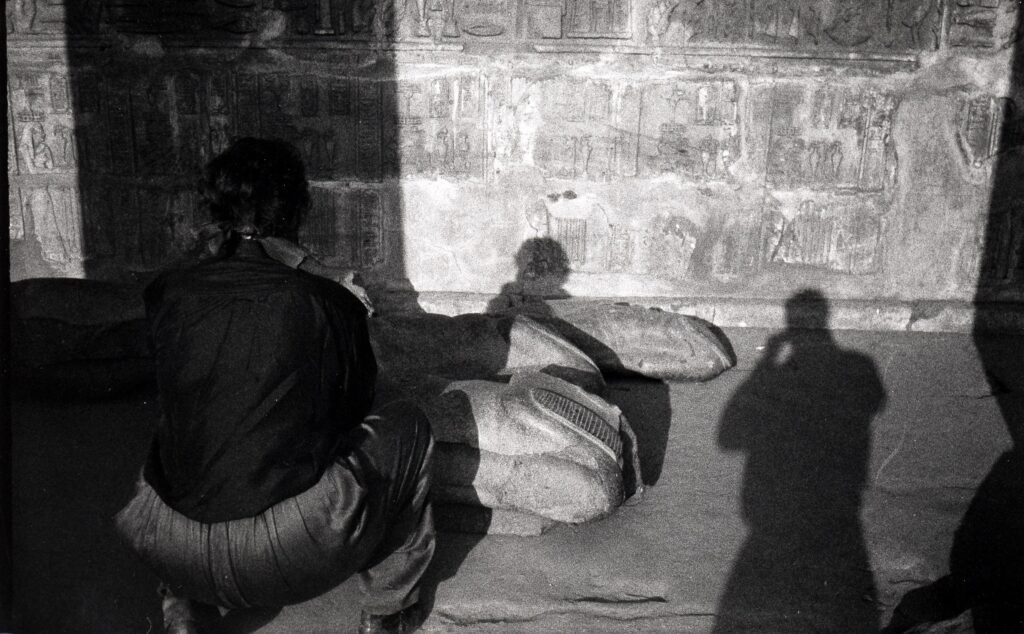
`What these ashes wanted’ preview
Karyn Sandlos on `What these ashes wanted’
“What these ashes wanted places flesh on the poet Ann Carson’s words “…death lines every moment of ordinary time.” With this work Hoffman resides in an acutely intimate time, a daily practice of loss lived precariously between the terror of psychic disintegration and the provisional solace taken through public rituals of mourning. What these ashes wanted is not a story of surviving death, but rather, of living death through a heightening of the quotidian moments of every day experience.” (“Landscape with Shipwreck: 1st Person Cinema and the Films of Philip Hoffman”)
RACING HOME -Interactive (2014) Co-maker, Marian McMahon
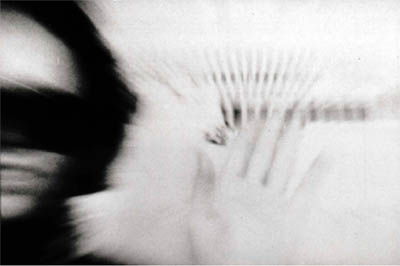
Anna Wiehl on `Racing Home-Interactive’
Originally, Racing Home was meant to be a linear documentary by the Canadian filmmaker Marian McMahon on identity, race and belonging. However, the project was never finished. In 1996, McMahon died of cancer and bequeathed to her partner Phil Hoffman an apartment full of 8 and 16mm footage—factual vignettes but also highly personal reflections, sound records and archival material she had collected. Thus, after McMahon’s death, Hoffman found himself confronted with a large array of diverse artefacts. Being a filmmaker himself, Phil made Marian’s project his own, and set out to edit her footage. However, he failed to force the material into the form of a linear documentary film, which—in his eyes—would neither pay due tribute to Marian’s intention when she was working on it in the 1990s nor justly depict his relationship with Marian and her filmic work. (`Beyond “Toolness”… Alphaville: Journal of Film and Screen MediaIssue 15, Summer 2018, pp. 33–48)
play “Racing Home_Interactive”
AGED (2014)
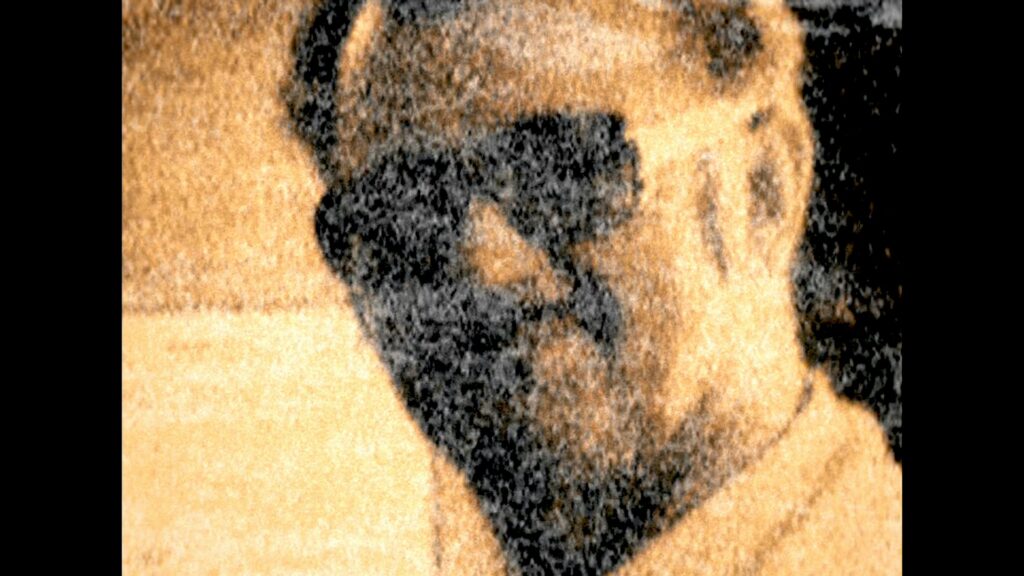
Mike Hoolboom on `Aged’
The camera arrives to remind us of our maskes, our winning poses, even as it challenges us to feel the passing moments, to face what cannot be faced. How does the good son meet the end of his father? With golden light, and a pair of empty lawn chairs, a lone swan, long the animal familiar for this restless traveller, the body floats above the water but the head is buried beneath the surface, hunting for clues, for the mysteries of sex and death and family that are waiting there for anyone brave enough to endure them”. (`The Gift of Dying’)
more on `Aged’
ON THE POND (1978)
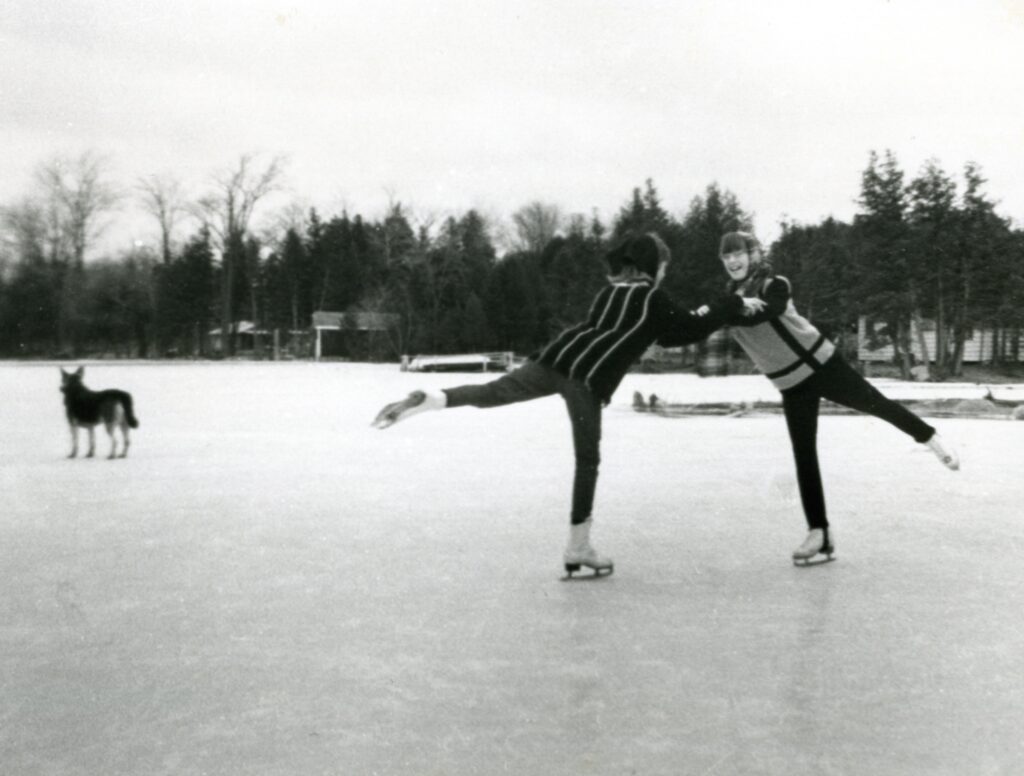
Michael O’Pray on `On the Pond’
“Hoffman’s film is in the experimental film tradition of the personal diary although in this case a beautifully paced mixture of family photographs and dramatic reconstruction interwoven into a narrative that creates objective distance. On the Pond reveals skills of editing, sound and story-telling which evoke in ten minutes a complex and emotional study of family, its past and present, its young dreams and its affections. Unsentimental, evocative and perfectly pitched in its emotional resonance, it avoids all the pitfalls of personal narrative and is an excellent example of the short film’s power when handled with skill, sensitivity and integrity. ” (New Canadian Film, Canada House)
